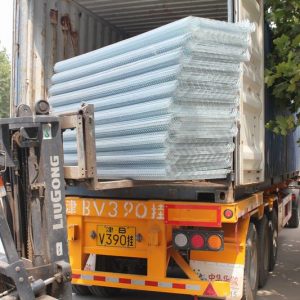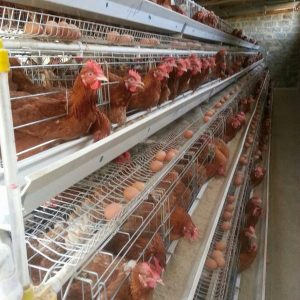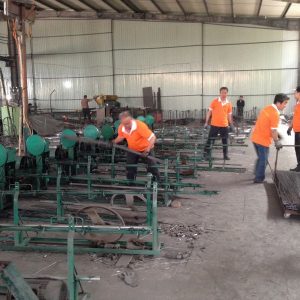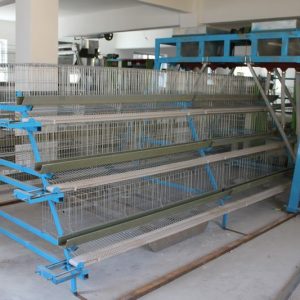
Raising broilers during the period of low profit
At present, the broiler farming industry has entered a period of meager profit. If the management is not in place and the technology is not properly applied, it will cause economic losses, so that broiler households (farms) have no money to make or lose money. In order to obtain better economic benefits during broiler raising in the low profit period, we must pay attention to refined management, especially small households and individual households, and we need to strengthen the management of feeding. In view of the current problems and misunderstandings of some broiler farms, the technical level of the “three customs” management of broiler breeding in the period of low profit is proposed:
1. Turn off good feed conversion rate
Feed cost accounts for 60%~70% of the total production cost of broilers. Therefore, increasing feed conversion rate to control feed cost is an important way and means to ensure breeding efficiency. There are many factors that affect feed conversion, such as broiler breeds, chicken health level, feed quality and compatibility, feed processing and feed type, breeding environment, etc. Farming professional households mainly control through the following aspects:
1. The choice of diet: according to different growth and development stages of broilers, choose the corresponding full-price compound feed. If self-ingredients are used, they should be formulated according to the nutritional needs of broilers at all stages, and adjusted appropriately according to factors such as age, growth rate, feeding density, season and other factors. Powder and granular crushed feed will reduce the variety of daily feed and affect the feed conversion rate of broilers. During production, this kind of feed is often precipitated, which on the one hand causes the separation of nutrients or dressing drugs, on the one hand it is not convenient for broilers to eat. Farmers can prevent this from happening by changing feed types and frequently cleaning feed troughs.
2. Change the feeding mode: feeding procedures and methods should match the needs of broilers. Broodstock requires good quality and high protein content. Broken feed is suitable and used within 1-10 days of brooding. As the chickens grow, the nutrition in the diet should also change, with the proportion of energy feed increasing and the proportion of protein falling. The feedstock is generally fed for about 15 days, and the feed particles are slightly larger than the crushed feedstock. Feeding fattening feed is started at about 25 days of age until it is released. When growing to fattening, the diameter of feed pellets is generally controlled between 3 and 4 mm.
With the growth of broilers, the height of the feed trough should be adjusted in a timely manner. Conditional chicken farms should adjust the height of the feed trough within 2 to 3 days. At the same time, the amount of feed in the feed trough should be adjusted according to the feed intake of the chickens Adjust the control, do not feed too much feed, so as not to cause waste and reduce feed conversion rate.
3. Careful daily management: The effect of ambient temperature on feed conversion is more obvious. When the temperature is lower than the comfortable temperature of the chicken, the chicken will only maintain its own temperature by increasing the feed intake and converting the energy. When the temperature is too high, the feed intake of the chickens decreases, which affects the production speed and increases the feed conversion rate. If high temperature is accompanied by high humidity, it will be more difficult to control the feed conversion rate. In addition, the effect of drinking water on feed conversion rate is also obvious. Tests show that the water-to-material ratio is appropriate between 1.7:1, and a reduction in drinking water will result in a reduction in feed intake, which indirectly affects the conversion rate. Therefore, adequate, clean and fresh drinking water should be provided.
Second, check the environment control
1. Temperature and humidity: 1~3 days old 34~32℃, in this temperature range, broilers can feel comfortable, which is conducive to the absorption of yolk, growth and development of chicks, and reduces the chance of diarrhea. In order to ensure that the temperature in the house after entering the chicken reaches the standard, pre-heating work needs to be performed in advance. As the age of the chickens increases, the temperature in the house decreases steadily, generally 32 to 30°C at 4 to 7 days old; 30 to 27°C at 8 to 14 days old; and 27 to 24°C after 15 days of age. In addition to observing the temperature according to the table, temperature control should be combined with the flock.
General broiler chickens at 1 to 7 days of age, the relative humidity in the house is preferably 65 to 70%, and later relative humidity is 55 to 60%. Appropriate humidity can prevent diseases caused by dust irritating the respiratory tract of chickens and causing respiratory symptoms. High humidity can cause breathing difficulties and weaken the blood’s ability to transport oxygen.
2. Scientific ventilation: The rapid growth and vigorous metabolism of broilers require adequate ventilation. The air volume is small, and the harmful gas produced by the feces of the flock will cause air pollution in the chicken house, affecting the health and production performance of the flock. In fact, many chicken farms have insufficient ventilation. Even in summer, when all doors and windows are open, if it is in winter, let alone heat preservation, let alone ventilation. Therefore, it is recommended to install fully automatic environmental control system equipment to provide better protection for broilers.
3. Light control: For broiler farming, people attach importance to light during brooding and ignore light management at other times. Three days before brooding, in order to increase feed intake and reduce the adverse effects caused by darkness, generally 23 hours of light and 1 hour of darkness are used. The purpose of 1 hour of darkness is to adapt the chicks to the dark environment, so that there will be no congestion in the event of a power outage. The light intensity is around 50 lux. Then gradually reduce the light to the natural state, while reducing the light intensity to 10 lux. If the intensity is too large, it will easily lead to pecking, and the intensity is too small to serve the purpose of stimulating feeding.
3. Check the disinfection management
Chicken farm disease prevention and control methods are mainly disinfection, immunization, and drug prevention. In the production practice, there are many defects in the disinfection work of farm households, and it is necessary to emphasize.
1. Disinfection of chicken farm environment: clean and hygienic in and around the chicken farm, free of weeds and garbage. A disinfection tank should be set at the gate of the chicken farm, and the length of the disinfection tank should be 1 to 2 times the circumference of the wheels of the vehicle. Change the disinfection liquid in the disinfection tank frequently. In winter in the northern region, in order to prevent the liquid in the disinfection pond from freezing, salt can be added appropriately. Regularly disinfect the pavement, ground and drainage ditch in the field. The disinfection drugs are usually compound phenol or sodium hydroxide solution.
2. Disinfection with chicken: spray disinfection with chicken can purify the air and is an important means of preventing and controlling infectious diseases. Regularly spray disinfect the chicken house, cages and chicken body with disinfectant liquid. The general brooding period is twice a week, once a week in the future, or once a week in winter, twice a week in spring and autumn, and three times a week in summer. Increase frequency when an epidemic occurs. Spray disinfection can be combined with cooling and humidification. Because sterilization of chickens will lower the temperature of the house, so in winter, the house temperature should be properly increased by 3~4℃ before disinfection. It should be noted that when selecting disinfectant medicines with chickens, you must master the principles of safety, broad spectrum, high efficiency, and strongness, especially select disinfectants with low toxicity, irritation, and skin absorption to humans and chickens, such as peracetic acid. , Xinjieer, sodium hypochlorite, compound phenol, etc.
3. Disinfection of chicken farm personnel: Staff disinfection is a link that is easily overlooked by chicken farmers. The chicken farm should be equipped with spray sterilizer, ultraviolet sterilization lamp and foot disinfection tank as much as possible. Personnel should change their work clothes before entering the chicken coop, wash their hands with soap and disinfect before and after work, and enter the production area through the foot disinfection tank. If possible, a bath disinfection room can be built. All items entering the production area must be disinfected. Work clothes, shoes and hats should be sterilized by ultraviolet light with sufficient intensity. If necessary, soak the used work clothes and so on with disinfectant, and then wash with water. The disinfectants used for work clothes mainly include quaternary salt disinfectants, alkaline disinfectants and peracetic acid.



